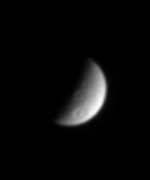NASA has selected nine studies to investigate new ideas for future mission concepts within its Astronomical Search for Origins Program.
Among the new mission ideas are some that will survey one billion stars within our own galaxy, measure the distribution of galaxies in the distant universe, study dust and gas between galaxies, study organic compounds in space and investigate their role in planetary system formation, and create an optical-ultraviolet telescope to replace the Hubble Space Telescope (HST).
The products from these concept studies will be used for future planning of missions complementing the existing suite of operating missions, including the Hubble and Spitzer Space Telescopes, and developmental missions such as the James Webb Space Telescope and Terrestrial Planet Finder.
Each of the selected studies will have eight months to further develop and refine concepts for missions addressing different aspects of Origins Program science. The Origins Program seeks to address the fundamental questions: “How did we get here?” and “Are we alone?” NASA received 26 proposals in response to this call for mission concepts.
The selected proposals and their principal investigators are:
– BLISS: Revealing the Nature of the Far-IR Universe, Matt Bradford, Jet Propulsion Laboratory, Pasadena, Calif. BLISS will enable far-infrared spectroscopy of the galaxies that make up the far-infrared background out to distances of some of the farthest galaxies known today. BLISS spectral surveys will chart the history of creation of elements heavier than helium and energy production through cosmic time.
– Origins Billion Star Survey (OBSS), Kenneth Johnston, U.S. Naval Observatory, Washington. OBSS will provide a complete census of giant extrasolar planets for all types of stars in our galaxy and the demographics of stars within 30,000 light-years of the sun.
– The Space Infrared Interferometric Telescope (SPIRIT), David Leisawitz, Goddard Space Flight Center, Greenbelt, Md. SPIRIT is an imaging and spectral Michelson interferometer operating in the mid- to far-infrared region of the spectrum. Its very high angular resolution in the far infrared will enable revolutionary developments in the field of star and planet formation research.
– Cosmic Inflation Probe (CIP), Gary Melnick, Smithsonian Astrophysical Observatory, Cambridge, Mass. CIP will measure the shape of cosmic inflation potential by conducting a space-based near-infrared large-area redshift survey capable of detecting galaxies that formed early in the history of the universe.
– HORUS: High ORbit Ultraviolet-visible Satellite, Jon Morse, Arizona State University, Tempe. HORUS will conduct a step-wise, systematic investigation of star formation in the Milky Way, nearby galaxies and the high-redshift universe; the origin of the elements and cosmic structure; and the composition of and physical conditions in the extended atmospheres of extrasolar planets.
– Hubble Origins Probe, Colin Norman, Johns Hopkins University, Baltimore. This mission seeks to combine instruments built for the fifth HST servicing mission: Cosmic Origins Spectrograph and Wide Field Camera 3. This new space telescope at the forefront of modern astronomy will have a unifying focus on the period when the great majority of star and planet formation, heavy element production, black-hole growth and galaxy assembly took place.
– The Astrobiology SPace InfraRed Explorer (ASPIRE) Mission: A Concept Mission to Understand the Role Cosmic Organics Play in the Origin of Life, Scott Sandford, Ames Research Center, Moffett Field, Calif. ASPIRE is an mid- and far-infrared infrared space observatory optimized to spectroscopically detect and identify organic compounds and related materials in space, and understand how these materials are formed, evolve and find their way to planetary surfaces.
– The Baryonic Structure Probe, Kenneth Sembach, Space Telescope Science Institute, Baltimore. The Baryonic Structure Probe will strengthen the foundations of observational cosmology by directly detecting, mapping and characterizing the cosmic web of matter in the early universe, its inflow into galaxies, and its enrichment with elements heavier than hydrogen and helium (the products of stellar and galactic evolution).
– Galaxy Evolution and Origins Probe (GEOP), Rodger Thompson, University of Arizona. GEOP observes more than five million galaxies to study the mass assembly of galaxies, the global history of star formation, and the change of galaxy size and brightness over a volume of the universe large enough to determine the fluctuations of these processes.
More information on NASA’s Origins Program is available on the Internet at:
http://origins.jpl.nasa.gov/
Original Source: NASA News Release

